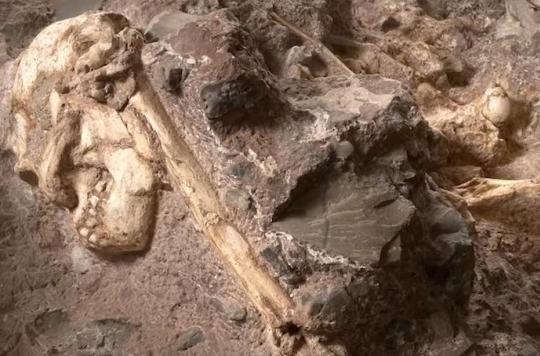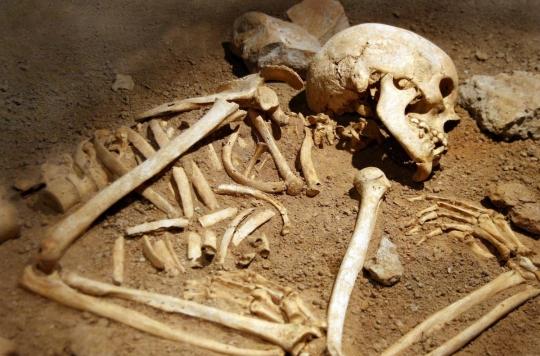More than 20 years after discovering Australopithecus Little Foot in South Africa, paleontologist Ron Clarke has made his first findings. The specimen would be 3.67 million years old, much older than the famous Lucy.

The famous Lucy has been dethroned. More than 20 years after discovering the australopithecine Little Foot (Little Feet), the South African paleontologist Ronald Clarke has finally made its first conclusions on the specimen. Result of the races: the Australopithecus, female, would be 3.67 million years old, against 3.3 million for Lucy.
In 1994, Ron Clarke discovered three small foot bones in Sterkfontein Cave, near Johannesburg in South Africa (hence the nickname now given to Australopithecus). Three years later, he realizes that these bones are in fact connected to an entire body completely buried in very hard rock. Little Foot would therefore likely have fallen into a crevasse while trying to escape a predator or rival. It seems that she fell at least ten meters and was stuck in the cave until her death.
Today, after 24 years of meticulous work during which Ron Clarke patiently removed hundreds of bones from the rock and scanned the bones in three dimensions for further in-depth analysis, the skeleton is 95% reconstructed. Incredible when you know that Lucy’s, discovered for its part in Ethiopia in 1974, revealed less than 40% of its secrets. Little Foot was therefore around 30 years old when she died and was 1.35 m tall. She was also part of a species called Australopithecus prometheusvegetarian, is slightly different from that of Lucy who was Australopithecus afarensis and therefore omnivorous.
“Our ancestors stood upright when they lived in the trees”
Thanks to its almost complete skeleton, now on display in a protected room at the University of the Witwatersrand in Johannesburg, scientists now know more about the members of Australopithecines as well as their level of evolution.
So while Little Foot probably spent a lot of time in the trees for shelter from predators, she was bipedal, albeit with slightly different feet than ours. As for his arms, larger than those of current humans, they were on the other hand weaker. Australopithecus would also present a youthful injury to the forearm.
“What Little Foot shows us is that the image represented in our books of our ancestors walking on all fours and then getting up gradually is totally false (…) Our ancestors were already standing when they lived in the trees and when they got off, they were walking upright”, concludes Ron Clarke by presenting his results on a prepublication server.
Conflicts and controversies
These were supposed to be published in early 2019 in the journal Journal of Human Evolution but due to disputes with colleagues, Ron Clarke and his collaborators preferred to go ahead and publish the results on the skull, motor skills and Little foot dating now.
Indeed, as one might expect, Australopithecus is at the heart of many controversies between paleontologists. This week, in an article published in theAmerican Journal of Physical AnthropologyLee Berger, also of the University of the Witwatersrand, and John Hawks, of the University of Wisconsin in Madison, question the naming A. prometheus as well as the age given by Clarke to Little Foot. According to them, the skull was too damaged by time to be able to be correctly dated.
Finally, according to William Kimbel, an anthropologist at the University of Tempe in Arizona, this work is “incomplete” and requires the examination of other fossils. Australopithecus South Africans in order to better be able to distinguish between the different species.
See below a video in which Ron Clarke introduces Little Foot:
.














